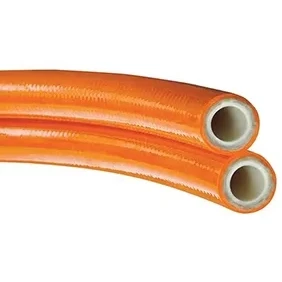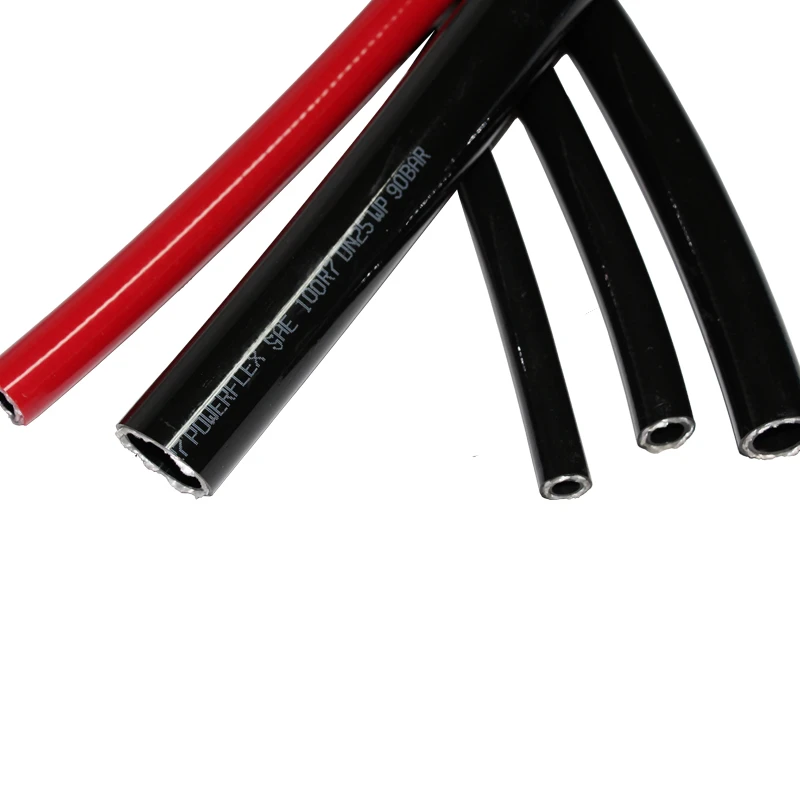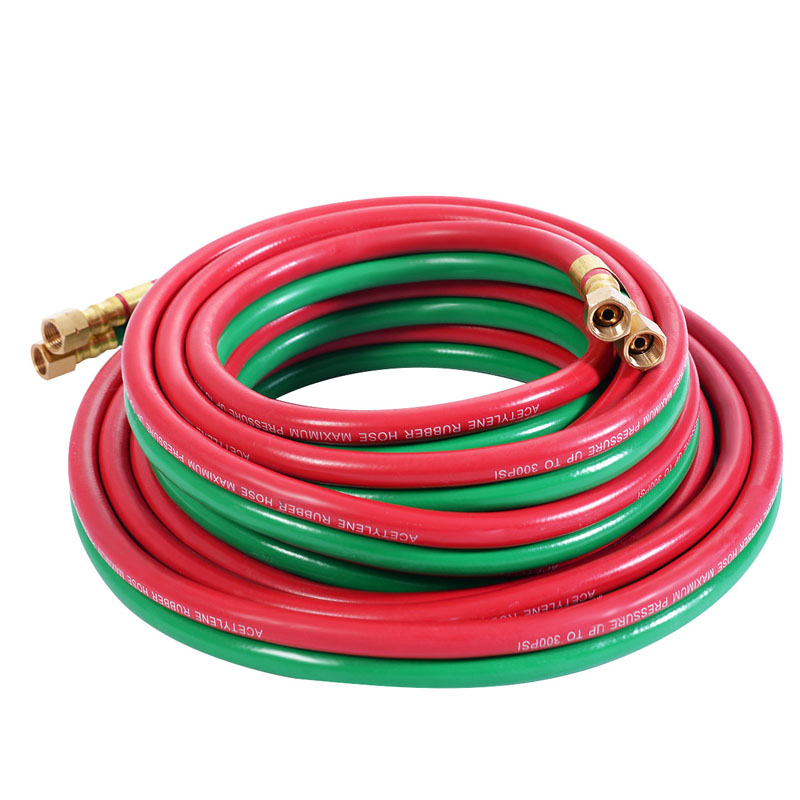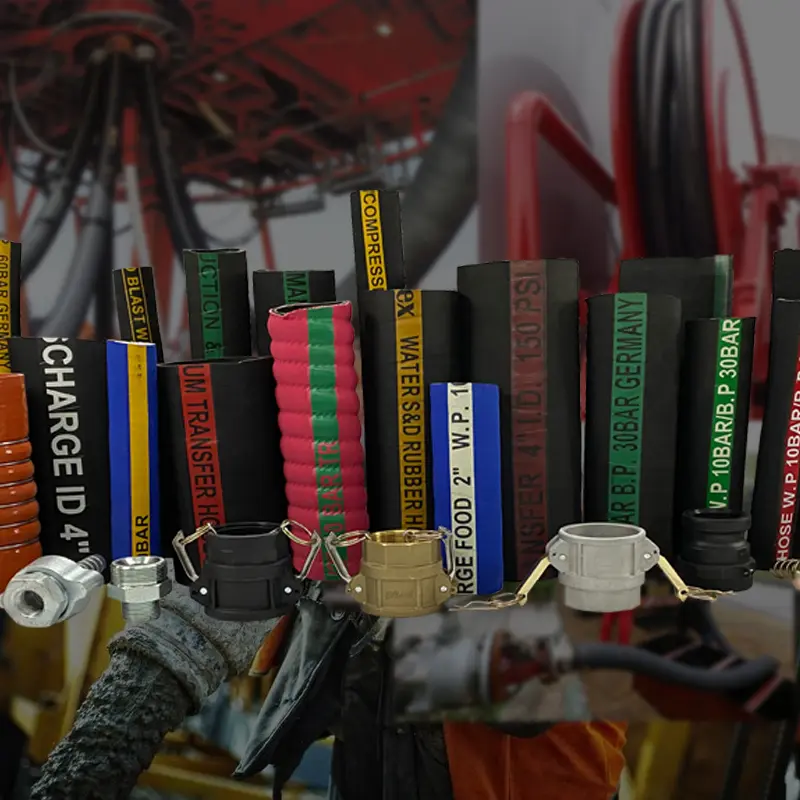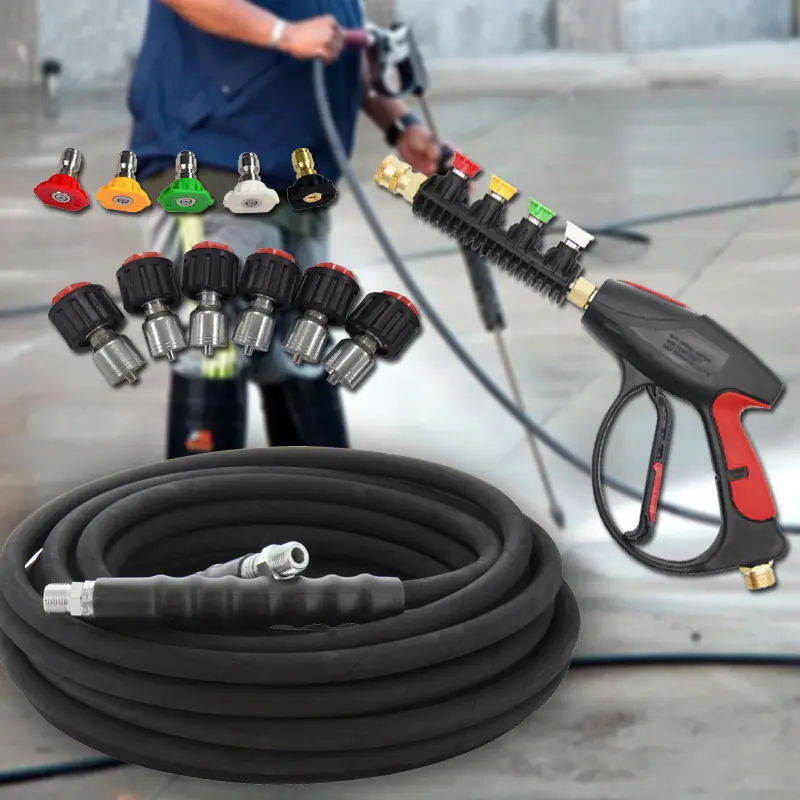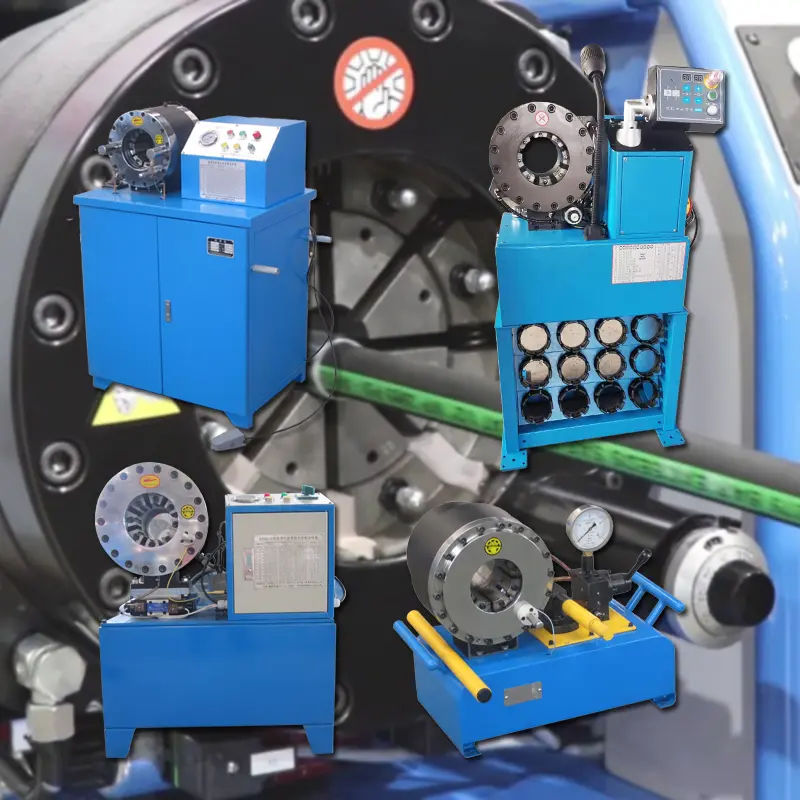Selecting the correct pressure rating is one of the most critical steps in designing a safe and efficient hydraulic system. Pressure determines how much force can be transmitted through the fluid, directly affecting system performance and hose life. Each hydraulic hose is designed with a specific Working Pressure (WP) and Burst Pressure (BP). The WP indicates the maximum continuous pressure that the hose can safely handle during normal operation, while the BP refers to the maximum pressure the hose can withstand before failure.
A good rule is to select a hose with a Burst Pressure at least four times higher than its Working Pressure, which provides a safety factor of 4:1. This ratio ensures that even temporary pressure spikes or surges will not cause immediate hose failure. In applications involving rapid pressure fluctuations—such as in excavators or mining machinery—a higher safety factor (up to 6:1) may be required.
Hydraulic hoses are typically made from a combination of synthetic rubber, thermoplastics, and metal reinforcements, each contributing to the hose’s overall performance. The inner tube, often made of synthetic rubber or thermoplastic, must be compatible with the hydraulic fluid and resistant to degradation. The reinforcement layer, usually composed of braided or spiral-wound steel wire or textile fibers, provides the strength to withstand high pressures. The outer cover, made from abrasion-resistant materials like rubber or thermoplastic, protects the hose from environmental damage, including UV rays, chemicals, and physical wear.
We can provide a wide range of types of hydraulic hoses, each coming in various sizes to meet different needs. Our various types of hose meet or exceed general standards such as SAE, DIN, ISO, etc. They, particularly hydraulic hoses, serve a wide array of uses and are especially suitable for the manufacture and maintenance of construction machinery such as excavators, agricultural machinery, coal mining machinery, etc. Hydraulic hose pipe is engineered to meet the needs of users seeking high-performance hoses.
Choosing the Right Size: 1 Inch Hydraulic Hose
A 1 inch hydraulic hose is commonly used in high-flow, medium- to high-pressure applications. Choosing the right size is not only about internal diameter but also about pressure capacity. A larger hose allows more fluid to pass through, reducing velocity and pressure loss, but it must still withstand the required working pressure. If the system demands higher pressure with moderate flow, a smaller hose might be more appropriate, provided it meets the WP and BP requirements.
When selecting a 1 inch hydraulic hose, it’s essential to verify the manufacturer’s data sheet for rated pressure and temperature limits. Always choose a hose that exceeds the maximum operating pressure of your system. For instance, if your system runs at 250 bar (3,625 psi), the selected hose should have a minimum WP of 250 bar and a BP above 1,000 bar to ensure durability and safety.
Additionally, consider the hose routing—tight bends or sharp turns can cause pressure drops and internal stress, leading to premature failure. Using bend restrictors and proper clamps can help maintain hose integrity and stable pressure performance.
Selecting the Right 1/2 Inch Hydraulic Hose for Your System
A 1 2 inch hydraulic hose (commonly referred to as a 1/2-inch hose) is one of the most widely used sizes in hydraulic applications, especially for moderate-pressure systems. This hose type is typically rated for working pressures between 1,800 and 3,000 psi, depending on its construction and reinforcement.
To select the correct hose, first determine your system’s maximum working pressure and expected pressure spikes. Pressure surges often occur when hydraulic cylinders reverse direction or when flow is suddenly restricted. If the working pressure is 2,000 psi and occasional spikes reach 2,500 psi, the chosen hose must have a WP above 2,000 psi and a BP exceeding 8,000 psi to maintain the proper safety factor.
Temperature also plays a significant role in pressure selection. Higher temperatures can reduce the hose’s pressure capacity. Always check the derating chart provided by the manufacturer when operating in environments above 80°C (176°F). Selecting the correct 1/2 inch hydraulic hose ensures system reliability and prevents catastrophic hose bursts caused by under-rated components.
The Role of Hydraulic Suction Hose in Low-Pressure Applications
While high-pressure hoses are designed to handle extreme conditions, a hydraulic suction hose serves a different yet equally important role. These hoses are designed for low-pressure applications where hydraulic fluid is drawn from the reservoir into the pump inlet. The key consideration here is preventing collapse under vacuum rather than resisting high pressure.
A properly selected hydraulic suction hose must have a reinforced structure—often a wire helix or textile braid—to prevent it from collapsing when the pump creates negative pressure. Although the pressure is low, improper selection can lead to fluid starvation, cavitation, and pump damage.
When matching suction hoses to a system, ensure they have adequate internal diameter to allow smooth flow, minimizing restrictions and turbulence. The suction line should be as short and straight as possible. Periodically inspect the hose for soft spots, kinks, or cracks, which can indicate internal damage. Replacing a worn suction hose promptly maintains consistent fluid flow and prevents pressure irregularities in the entire hydraulic system.
Ensuring Longevity Through Proper Hydraulic Hose Repair
Even with careful selection and maintenance, wear and damage may occur over time, making hydraulic hose repair essential for safety and system efficiency. Pressure leaks, blistering, or cracks in the outer cover often signal that the hose needs repair or replacement.
When conducting repairs, first depressurize the system and drain the fluid. Inspect the entire hose assembly to identify the source of failure—whether it’s due to excessive bending, overpressure, or fitting damage. Replace damaged sections rather than patching them temporarily, as improper repairs can significantly reduce pressure resistance and safety.
Always use compatible fittings and crimping tools as specified by the hose manufacturer. Incorrect crimping or mismatched fittings can cause leaks or blowouts when pressure increases. After repair, conduct a controlled pressure test to confirm that the hose can withstand its rated WP without deformation or leakage.
Regular inspection and prompt hydraulic hose repair extend the life of the hose assembly, maintain consistent pressure levels, and prevent costly system downtime. Following these best practices ensures that the hydraulic system remains safe, efficient, and long-lasting.
Hydraulic Hose Repair FAQs
What is the difference between Working Pressure (WP) and Burst Pressure (BP)?
WP is the maximum continuous pressure a hose can safely operate under, while BP is the maximum pressure it can handle before bursting. The BP is usually four times higher than the WP to maintain a safety margin.
How do I calculate the safety factor for a hydraulic hose?
Divide the Burst Pressure by the Working Pressure. For most hydraulic hoses, a minimum safety factor of 4:1 is recommended, though higher factors are used for critical systems.
Can I use a 1 inch hydraulic hose instead of a 1/2 inch hose?
Only if the system design allows for the change in flow rate and pressure drop. A larger hose reduces pressure loss but must still meet or exceed the required WP and BP specifications.
How often should hydraulic suction hoses be replaced?
Suction hoses should be inspected monthly and replaced every 1–2 years or sooner if soft spots, cracks, or signs of collapse appear.
What should I check after performing a hydraulic hose repair?
Always pressure test the hose under controlled conditions to verify there are no leaks. Check fittings, bends, and protective sleeves to ensure proper installation and safety compliance.
Product Application











